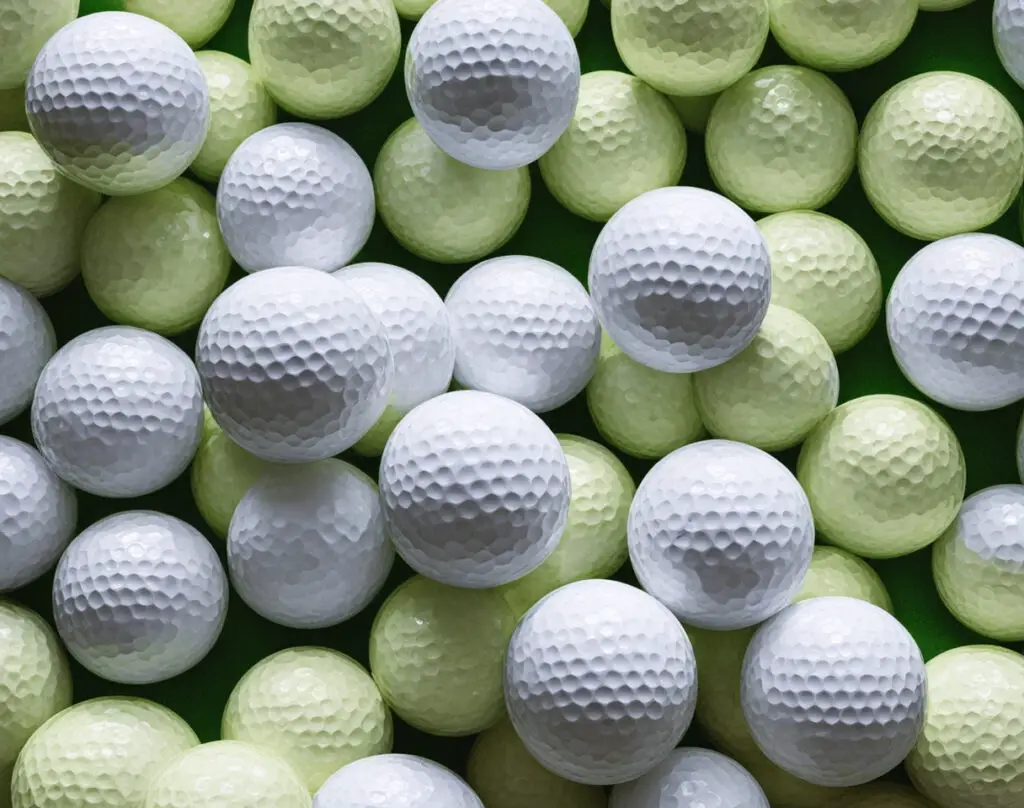As an Amazon Associate GolferHive.com earns from qualifying purchases.
Are Golf Balls Biodegradable? The Science of Decomposition
Key Facts:
- Traditional golf balls are not biodegradable.
- Biodegradable golf balls offer an eco-friendly alternative.
- Materials like cornstarch and polyvinyl alcohol are used in biodegradable golf balls.
- Biodegradable golf balls can decompose in weeks or months.
- Using biodegradable golf balls is a step towards sustainable golfing.
Contents
show
Are Golf Balls Biodegradable?
Traditional golf balls are not biodegradable. They are made of synthetic materials, such as polyurethane and ionomer, which can take hundreds or even thousands of years to decompose. This is a problem because golf balls are often lost or discarded in the environment, where they can pollute waterways and harm wildlife. However, there are now a number of biodegradable golf balls on the market. These balls are made from natural materials, such as corn starch and polyvinyl alcohol, which can break down within a few weeks or months in the environment. Biodegradable golf balls are a more sustainable option for golfers, and they can help to reduce the environmental impact of the game.
What Makes Traditional Golf Balls Non-Biodegradable?
Traditional golf balls are not biodegradable because they are made from synthetic rubber polymers and plastics. These materials are not only harmful to the environment but also take hundreds to thousands of years to decompose. The core is usually made of rubber, and the outer layer is often a blend of urethane and other plastics. These materials are designed for durability and performance, not for breaking down naturally.How Long Do Traditional Golf Balls Last in Nature?
Traditional golf balls can last up to 1,000 years in nature. This longevity poses a significant problem for landfills and marine life. When these balls end up in water bodies, they can release microplastics and other toxic substances, affecting marine creatures and ecosystems.What Are Biodegradable Golf Balls Made Of?
Biodegradable golf balls are made from materials like cornstarch, polyvinyl alcohol (PVA), and other biodegradable polymers. These materials are designed to break down naturally, reducing the environmental impact significantly.How Do These Materials Affect Performance?
Biodegradable golf balls perform comparably to traditional ones, although they may lack in some aspects like durability. However, for the casual golfer or for practice sessions, they serve the purpose well while being kinder to the environment.How Long Do Biodegradable Golf Balls Take to Decompose?
Biodegradable golf balls can take anywhere from a few weeks to a few months to decompose, depending on the materials used and environmental conditions. Factors like moisture, temperature, and microbial activity can influence the rate of decomposition.Are Biodegradable Golf Balls Safe for Marine Life?
Yes, biodegradable golf balls are safe for marine life. They break down into harmless components like carbon dioxide, water, and biomass, which have no adverse effects on aquatic ecosystems.The Pros and Cons of Using Biodegradable Golf Balls
Pros of using biodegradable golf balls:- Reduced environmental impact: Biodegradable golf balls break down naturally in the environment, reducing pollution in waterways and oceans and protecting wildlife.
- Sustainability: Biodegradable golf balls are made from renewable resources, making them a more sustainable option than traditional golf balls.
- Performance: Biodegradable golf balls offer similar performance to traditional golf balls in terms of distance, spin, and feel.
- Cost: Biodegradable golf balls are typically more expensive than traditional golf balls.
- Availability: Biodegradable golf balls may not be as widely available as traditional golf balls.
- Durability: Biodegradable golf balls may not be as durable as traditional golf balls, and may not last as long.
Benefits of Using Biodegradable Golf Balls
Using biodegradable golf balls is better for the environment, more sustainable, and aligns with ethical considerations. These balls are made from renewable resources and do not contribute to plastic pollution. They also decompose much faster than traditional golf balls, reducing their impact on landfills and marine environments.Drawbacks of Using Biodegradable Golf Balls
The main drawbacks of using biodegradable golf balls are their durability issues, shorter lifespan on the course, and cost considerations. These balls are generally more expensive due to the cost of eco-friendly materials and the technology used to make them.Practical Considerations for Golfers
Can I Use Biodegradable Golf Balls on Any Golf Course?
Yes, you can use biodegradable golf balls on most golf courses, but it’s always good to check the specific policies of the course you plan to play on.How to Check Golf Course Policies
To check golf course policies, you can visit their website or contact them directly to inquire about their stance on biodegradable golf balls. Some courses may even encourage the use of eco-friendly alternatives.Are Biodegradable Golf Balls Tournament-Legal?
Biodegradable golf balls are generally not tournament-legal. They often do not meet the performance criteria set by golfing authorities for official tournaments.How to Check Tournament Policies
To find out if you can use biodegradable golf balls in a tournament, check the tournament’s rules and regulations or contact the organizers directly.FAQs About Biodegradable Golf Balls
Is there such a thing as biodegradable golf balls?
Yes, biodegradable golf balls exist and are made from eco-friendly materials like cornstarch and polyvinyl alcohol.
Can I hit golf balls into the ocean?
It’s not advisable to hit traditional golf balls into the ocean due to their environmental impact, but biodegradable options are safer for marine life.
How long does it take for a biodegradable golf ball to dissolve?
A biodegradable golf ball can take from a few weeks to a few months to fully dissolve, depending on environmental conditions.
Are there biodegradable golf balls to hit into the ocean?
Yes, some biodegradable golf balls are specifically designed to be safe for marine environments and even contain fish food in their core.

